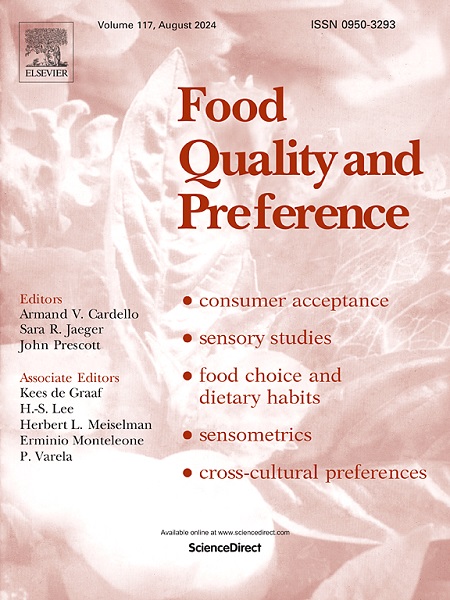消费者意识和先前暴露在偏好新的区域食品标签中的作用:来自佛罗里达州西南部的证据
IF 4.9
1区 农林科学
Q1 FOOD SCIENCE & TECHNOLOGY
引用次数: 0
摘要
近年来,在经济和质量观念的双重推动下,消费者对当地生产的食品的需求有所增加。虽然许多研究调查了已建立的地方和区域标签对消费者偏好的影响,但很少有人知道消费者对新引入的区域营销标签的反应以及他们对这些标签的认识如何随着时间的推移而演变。这项研究通过调查消费者对“SWFL新鲜”标签的评价来解决这一差距,这是最近推出的区域食品品牌倡议。通过两次调查的离散选择实验,我们研究了消费者意识的发展和之前的曝光对他们支付意愿的影响。在此过程中,我们对新兴区域标签如何获得市场认可和经济价值提供了新的见解。结果表明,与没有接触过swfl标签的消费者相比,之前看过标签的消费者愿意为每磅swfl标签的西红柿多支付85%的费用。然而,在调查波之间没有观察到显著差异,这表明意识可能没有随着时间的推移而充分提高。这些发现对区域品牌战略具有重要意义,强调了持续营销努力和消费者参与的必要性,以提高标签认知度和经济影响。本文章由计算机程序翻译,如有差异,请以英文原文为准。
The role of consumer awareness and prior exposure in preferences for a new regional food label: Evidence from Southwest Florida
Consumer demand for locally produced food has increased in recent years, driven by both economic and quality-related perceptions. While many studies have examined the impact of established local and regional labels on consumer preferences, little is known about how consumers respond to newly introduced regional marketing labels and how their awareness of such labels evolves over time. This study addressed this gap by investigating consumer valuation of the “SWFL Fresh” label, a recently launched regional food branding initiative. Using a discrete choice experiment across two survey waves, we examined both the development of consumer awareness and the influence of prior exposure on their willingness to pay. In doing so, we offered new insights into how emerging regional labels gain market recognition and economic value. Results indicated that consumers who have previously seen the label are willing to pay 85 % more per pound of SWFL-labeled tomatoes than those with no exposure. However, no significant differences were observed between survey waves, suggesting that awareness may not have increased sufficiently over time. These findings have strong implications for regional branding strategies, highlighting the need for sustained marketing efforts and consumer engagement to enhance label recognition and economic impact.
求助全文
通过发布文献求助,成功后即可免费获取论文全文。
去求助
来源期刊

Food Quality and Preference
工程技术-食品科技
CiteScore
10.40
自引率
15.10%
发文量
263
审稿时长
38 days
期刊介绍:
Food Quality and Preference is a journal devoted to sensory, consumer and behavioural research in food and non-food products. It publishes original research, critical reviews, and short communications in sensory and consumer science, and sensometrics. In addition, the journal publishes special invited issues on important timely topics and from relevant conferences. These are aimed at bridging the gap between research and application, bringing together authors and readers in consumer and market research, sensory science, sensometrics and sensory evaluation, nutrition and food choice, as well as food research, product development and sensory quality assurance. Submissions to Food Quality and Preference are limited to papers that include some form of human measurement; papers that are limited to physical/chemical measures or the routine application of sensory, consumer or econometric analysis will not be considered unless they specifically make a novel scientific contribution in line with the journal''s coverage as outlined below.
 求助内容:
求助内容: 应助结果提醒方式:
应助结果提醒方式:


